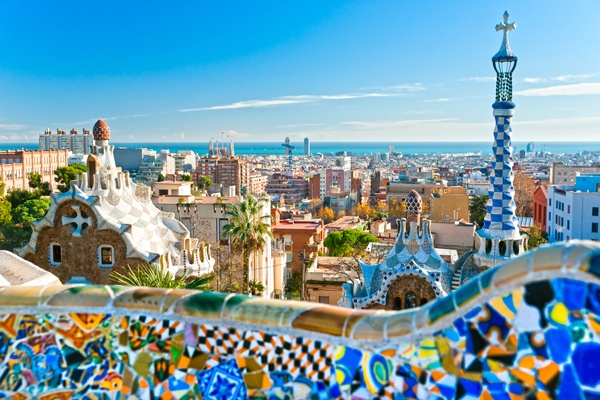Turning a functional object like a building into an art-form requires a unique combination of artistic flair, pragmatism and design skill. The finest architects can create an impression of life, motion using stationary objects, adding dashes of beauty and colour to urban skylines. Some of these buildings become tourist attractions in their own right, and the following architects are famous for introducing revolutionary innovations to their field.
Antoni Gaudi – Spain
Notable work: Sagrada Familia, Barcelona
With one of the world’s most discernible architectural styles, Gaudi’s work is defined by the things he loved most in his life: nature and religion. The religious influence on his work and his growing Roman Catholic faith earned him the moniker “God’s Architect”. Straight lines are often difficult to find in his designs, allowing his buildings’ forms to take on a more organic and natural appearance. Arguably his most famous building, the Sagrada Familia in Barcelona, remains unfinished, and is nonetheless one of the most visited sites in Catalonia. Seven of his works have been declared World Heritage Sites by UNESCO.
Frank Gehry – Canada
Notable work: Walt Disney Concert Hall, Los Angeles
Touted by Vanity Fair as the most important architect of our age, Frank Gehry’s buildings are typified by their “deconstructivist” style. By fragmenting the forms of his buildings and manipulating each surface, he has created some truly remarkable forms that you might not have believed could form a standing, functional building.
Oscar Niemeyer – Brazil
Notable work: Oscar Niemeyer Museum Curitiba, Paraná, Brazil
Credited as having designed the first state-sponsored skyscraper, Niemeyer is also known for his contribution to the construction of the UN headquarters in New York. He was a key figure in the development of modern architecture, revered for his exploration of the aesthetic possibilities of simple reinforced concrete. He also has several famous buildings in South America and in Europe.
Ieoh Ming Pei – China
Notable work: Le Grand Louvre (The Pyramid), Paris
Born in China, Pei moved to the US at the age of 17 to study architecture. He started his career in 1950 with the design of urban projects and office buildings, and won international acclaim for his building, the Mesa Laboratory near Boulder, Colorado. It was celebrated for blending seamlessly into the local landscape. He achieved the same result with his most famous work, Le Grand Louvre: a glass pyramid that manages to blend in with the French Renaissance architecture of the Louvre Museum.
Charles-Édouard Janneret (AKA Le Corbusier) – Switzerland
Notable work: National Museum of Western Art, Tokyo
Le Corbusier (French for “The Raven-like One”) was not only an architect but a painter, designer, writer and, most notably, an urban-planner concerned with the quality of life in rapidly-expanding cities. Born in Switzerland (where his face appears on the ten franc banknote) and later becoming a French citizen, he is a pioneer of what we today call modern architecture, with a prolific career spanning five decades and several continents.
Norman Foster – England
Notable work: The Gherkin, London
Britain’s greatest builder of landmark office buildings is the mind behind London’s iconic “Gherkin”. His breakthrough work came much earlier than the relatively modern Gherkin (completed in 2003), when he designed the Willis Building in Ipswich. It had open-plan offices, roof gardens, an Olympic-sized swimming pool and a gymnasium, all features that stood out at the time it was built – 1974. In the course of his career he has won more than 190 architectural awards and more than 50 national and international competitions.
Jørn Utzon – Denmark
Notable work: Sydney Opera House
One of the world’s most recognizable buildings was the result of a winning entry in a competition, where Jørn Utzon beat 232 other proposed designs for the Sydney Opera House. When the building was declared a World Heritage Site in 2007, Utzon became the second person to receive this honour during his lifetime. His Danish roots gave him a Nordic sense of concern for nature, which manifested in his buildings in their emphasis on form and function. He believed a design could grow like a tree, saying: “If it grows naturally, the architecture will look after itself”. The shell-like exterior of the Sydney Opera House was based, he said, on the simple act of peeling an orange. The 14 shells of the building, though seemingly random in shape and size, are intended to form a perfect sphere when combined.




